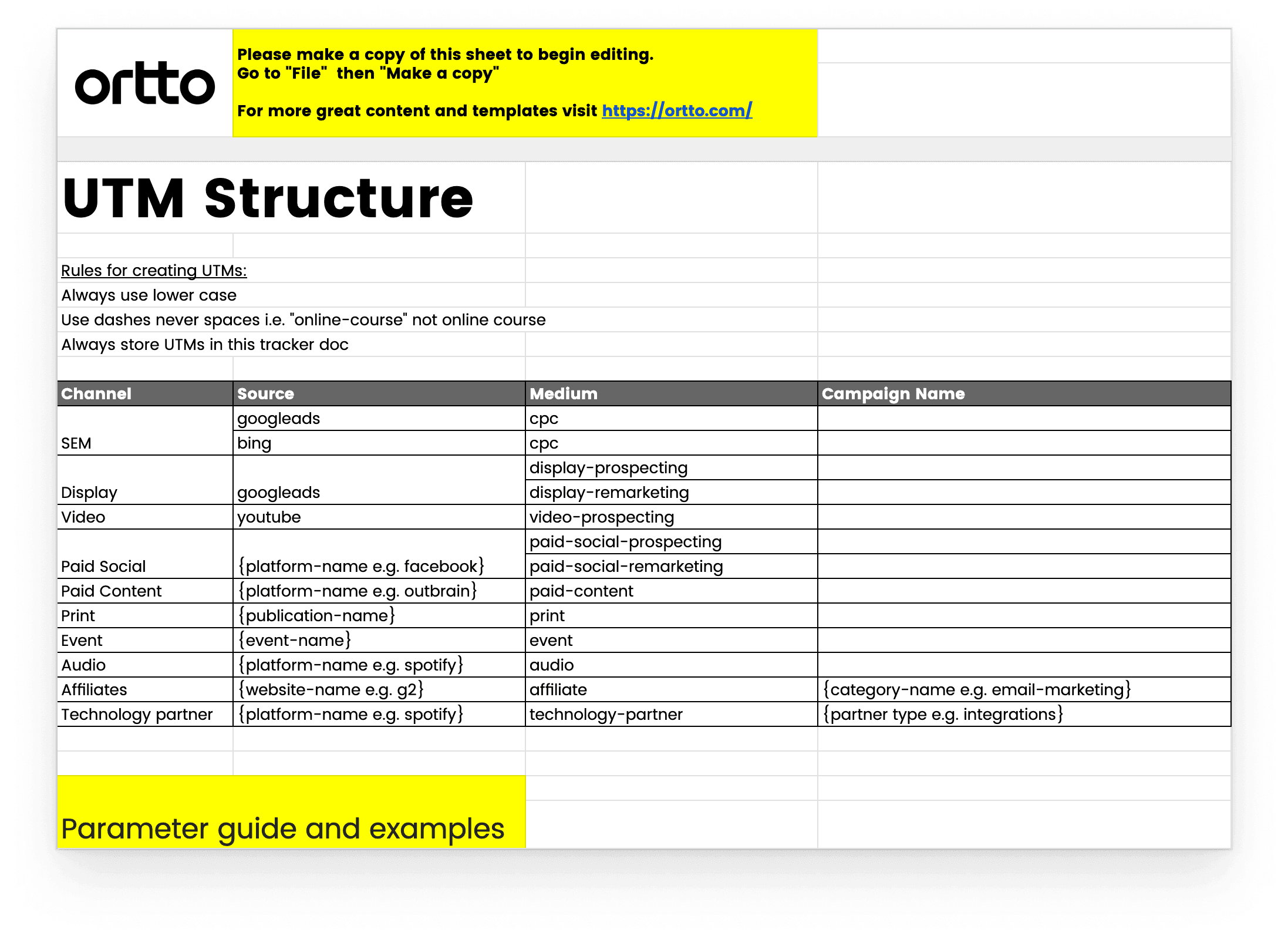Marketers who can accurately attribute revenue and traffic to specific campaigns, content, or channels are more likely to reach and exceed their macro goals for a few reasons:
Accurate attribution helps inform strategy — when you know what performs, you know where to amp up
Proving ROI helps unlock additional marketing budget and resources
With a marketing attribution model that goes beyond last click, marketers can prove the value of upper-funnel and middle-funnel activities
UTM parameters are an essential part of tracking attribution — and the more you understand how they work, the better you'll be able to set them up for accuracy.
In this article, we share what UTM parameters are, why they're important, how they work, and best practices for use. We've also included a UTM builder template to setting up and tracking UTMs simple.
What are UTM parameters?
UTM stands for Urchin Tracking Module. UTM parameters (also called UTM codes or tags) are snippets of text you can add to the end of a URL.
These snippets help you track where website traffic comes from. For example, if a user clicks on a Facebook ad and reaches your landing page, the UTM will help you attribute the user session to the Facebook ad.
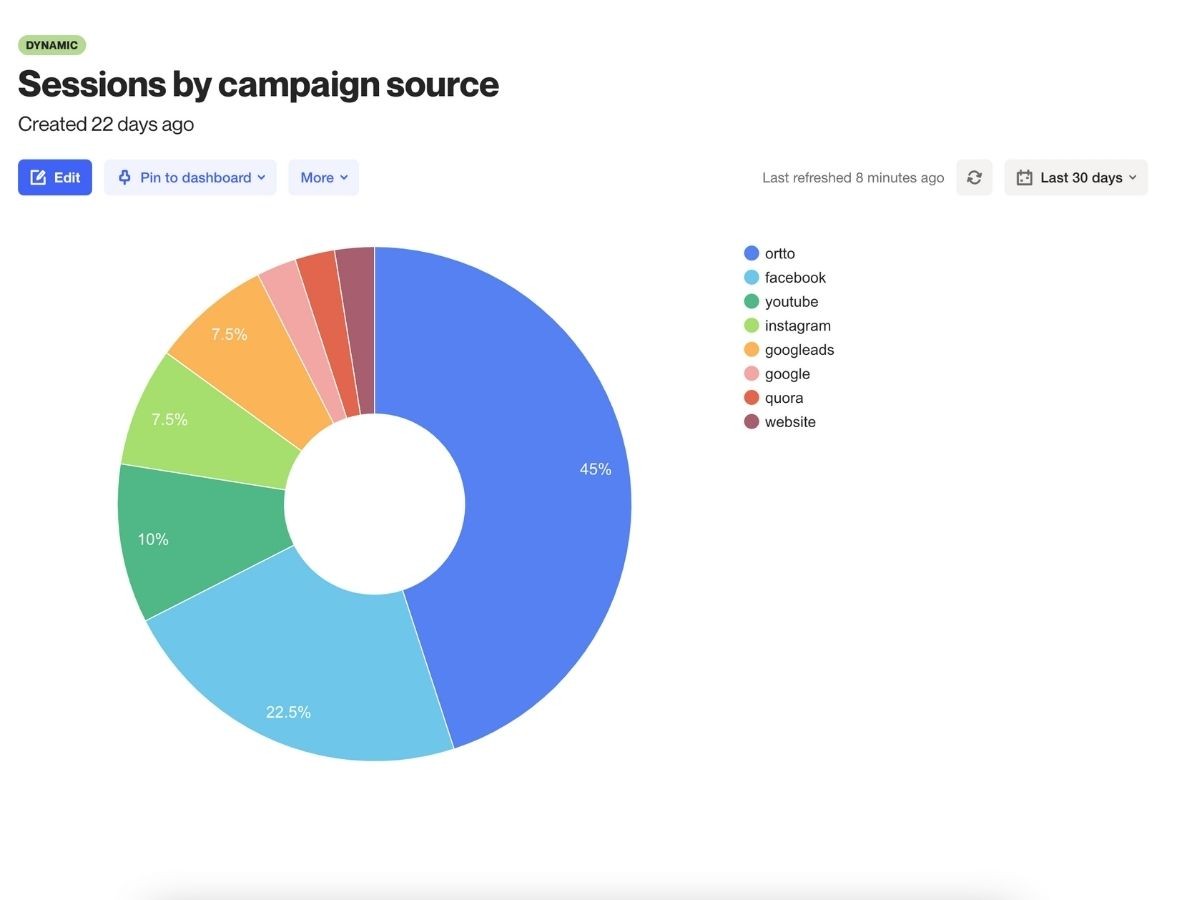
Why are UTM parameters important?
Every business dedicates resources to producing campaigns and content across a number of paid and organic channels. Attaching UTMs to your links helps you identify which messages and channels are generating the most traffic or conversions, and which need improvements.
This data is crucial for allocating marketing budget, justifying your spend, optimizing campaigns, and putting your team's focus on the right things.
How do UTM parameters work?
There are five types of UTM parameters you can add to your content to help you track traffic. Each type is identifiable by a specific tag, and performs its own identification job. The more you use, the more granular data you'll get.
1. utm_source
This tag identifies the source of your traffic (e.g. Facebook, search engine, etc.). For example, if the user arrives to your website by clicking through a Google search engine result, the tag would read:
utm_source=google
2. utm_medium
This UTM code specifies the medium, like CPC or newsletter, for example. If your source is Facebook, you might use the label “social” to indicate the traffic came from social media. Below is what the tag would look like in this instance:
utm_medium=social
3. utm_campaign
This parameter indicates the campaign that the URL is part of. This might be an identifier like a tagline – e.g. “launch02015” or “website-redesign.” Example:
utm_campaign=website-redesign
4. utm_content
This is where things get granular. If you have, for example, two different calls to action in one piece of content, you can use this tag to tell your analytics tool which one is more effective. Here’s an example from a Glassdoor email with several CTAs.

Click the first green button and you’ll be redirected to a page with this URL:
utm_content=salary-alert-1-viewcompany-national
Click on the second green button and you’ll be directed to a page with this URL:
utm_content=salary-alert-1-allsalaries
These URLs are part of the same campaign and come from the same source and medium, but the piece of content is different. The UTM parameter “utm_content” indicates this difference.
5. utm_term
This UTM parameter is important for identifying the keywords that drive clicks via a paid search campaign. Here’s an example from the scheduling tool Calendly.
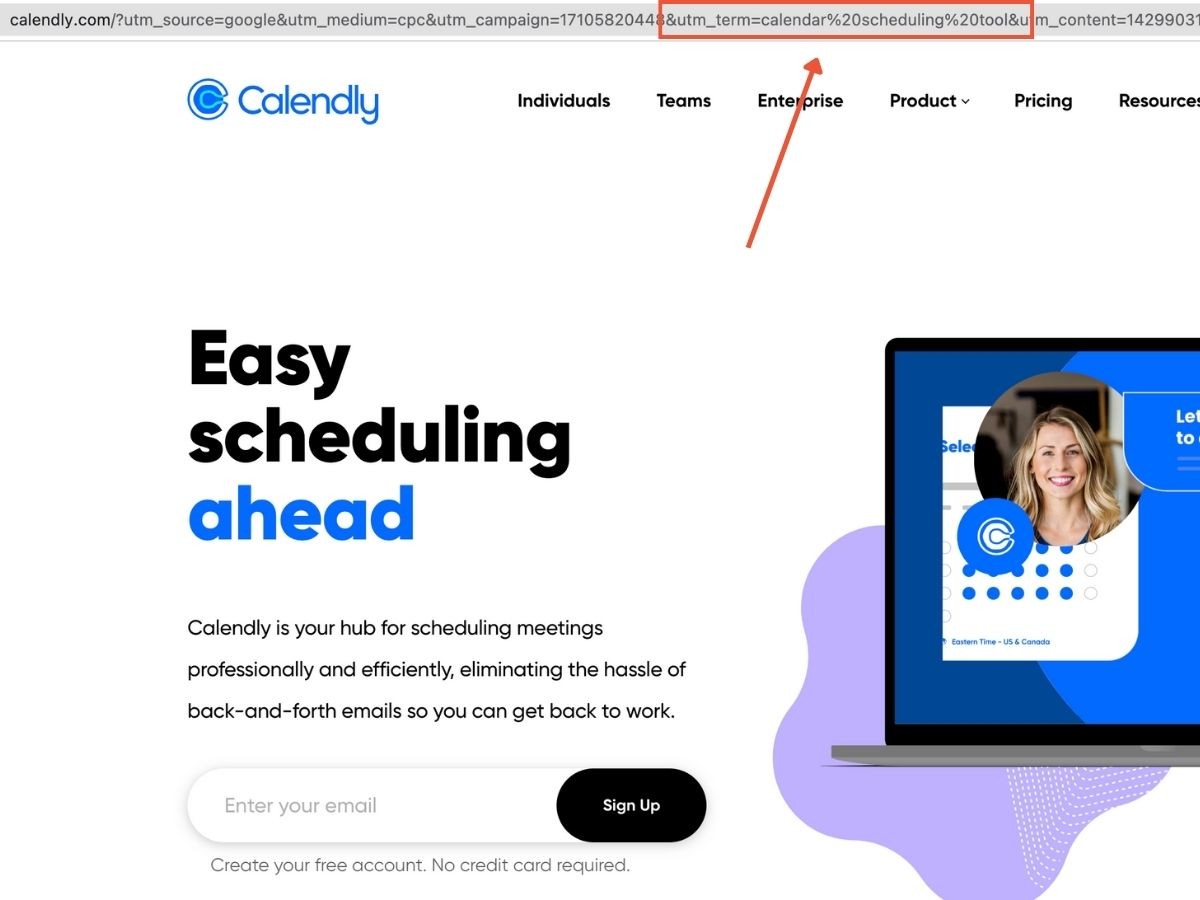
The “utm_term” tag here shows that “calendar scheduling tool” was the key phrase responsible for generating this click.
Where to use UTM parameters
In short, UTM parameters should be used on basically all of your digital marketing. The more visibility and data you have, the better you can draw insights about channel and campaign performance. Here are some of the most common examples.
Social media
UTM parameters help you identify which social media posts or ads drive the most traffic to your website. You can measure clicks and conversions, and see which posts resonate most with your audience. This data helps you fine-tune your social media strategy and allocate resources where they matter most. For example, if you're sharing a link to a new product on Facebook, you could add UTM parameters like this:
URL: https://www.example.com/blog-post
UTM Source: linkedin
UTM Medium: social
UTM Campaign: industry-insights
Email marketing
Adding UTM parameters to the links in your emails gives you the ability to track who's clicking on your links, which emails are performing well, which links within your emails are being clicked most frequently, and whether they're leading to desired actions (like purchases or sign-ups). For instance, if you're sending out a newsletter, you could use UTM parameters like this:
URL: https://www.example.com/demo-request
UTM Source: email
UTM Medium: newsletter
UTM Campaign: product-demo
PPC
By tagging your PPC ad URLs with UTM parameters, you can differentiate between various ad creatives, keywords, and campaigns. This granular data helps you optimize your ad spend by allocating resources to high-performing ads and keywords while eliminating wasteful spending on underperforming ones. For example, if you're running ads for a winter clothing sale on Google Ads, your UTM parameters might look like this:
URL: https://www.example.com/software-solution
UTM Source: google
UTM Medium: cpc
UTM Campaign: B2B-software-promo
Content syndication and partnerships
UTM parameters allow you to track the effectiveness of content partnerships and syndication efforts. For example, if you have a guest post on another business's website, you could use UTM parameters like this:
URL: https://www.example.com/guest-post
UTM Source: partner-website
UTM Medium: content-syndication
UTM Campaign: industry-expertise
Local SEO
UTM parameters help you understand which local listings or efforts are the most effective. For example, if you have a Google Business Profile listing, you could use UTM parameters like this:
URL: https://www.example.com/local-offers
UTM Source: google-my-business
UTM Medium: organic
UTM Campaign: local-listing
Influencer or affiliate marketing
With UTM parameters on influencer or affiliate posts, you can measure the traffic, conversions, and revenue generated from individual creators or publications to measure impact. For example, if an industry influencer shares a link to an eBook on their social platforms, you could add UTM parameters like this:
URL: https://www.example.com/ebook-download
UTM Source: influencer
UTM Medium: social
UTM Campaign: industry-expert-promo
Best practice tips for adding UTM tags to your URLs
Inconsistent parameters lead to incorrect, incomplete, or hard-to-interpret data, so it is crucial to set up naming conventions, monitor them, and stick to them. Here are a few guidelines to help you do it right.
1. Be descriptive with your tags
Remember, the point of UTM parameters is to track your data and sort it into an easily digestible report. If you tag your URLs with ambiguous terms or number sequences like 1A, IB, 1C, you’ll have a hard time interpreting those later on.
Instead, be descriptive with recognizable and clear terms that anyone interpreting the data can understand,
2. Don’t repeat yourself
Every UTM parameter should tell you something different about your visitors, so a good UTM parameter reads more like a sentence than a keyword. Example below:
?utm_source=linkedin&utm_medium=paid-social&utm_campaign=product-launch&utm_content=blog
Each parameter answers a question:
What campaign is this? Product launch
Where was the URL clicked (i.e. source)? URL was on LinkedIn
Where/how was the URL displayed (i.e. medium)? Paid social
Where do we send the user? Blog post
The UTM-tagged URL tells a story and can inform future marketing strategy.
3. Don’t use spaces
If your UTM parameters contain spaces, they will default to percentage signs in the URL, which leads to complications in tracking and inconsistencies in your campaign results.
Either dashes or underscores are acceptable alternatives, but whatever you choose, just be consistent! If one year you track a LinkedIn campaign and name it “google_eofy_campaign_2024” and the next year it’s named “google-eofy-campaign-2025”, historical comparisons will be much harder.
4. Choose relevant parameters
You don’t have to use every parameter just because it’s available to you. If you’re going to tag your URLs, you’re required to include “utm_source” but all the others are optional.
Unless you’re running a paid search ad, it’s best not to use the “utm_term” tag. In this case, it doesn’t tell us anything else about the traffic coming through this email that the “utm_campaign” parameter doesn’t.
5. Never use UTM parameters on internal links
Let’s say you published a new blog post and shared it on Twitter. One of your followers clicks on the link and arrives at www.yoursite.com/blog/post. When they are done reading, they want to go to your home page. They click on a link that takes them to http://www.yoursite.com/?utm_source=blog. You just lost the information that the user came from Twitter. Your analytics report will say that the visitor came from blog and not from Twitter.
Only use UTM parameters with outbound content – the social posts, emails, and paid search ads you push out to the masses. Otherwise, the tracker in your analytics software will completely reset when a visitor clicks on a tagged internal link, and you’ll get a false report of where your traffic is coming from.
6. Always use lowercase UTM parameters
If the utm_source for an email is “Webinar” but the parameters used are “utm_source=webinar” and “utm_source=Webinar”, the tags will be registered as unique tags in Google Analytics.
Furthermore, if you’re tagging every other link using a capital “W” you’ll notice in your reports that half your traffic is coming from the source “Webinar” and the other half is coming from “webinar”.
To avoid confusion, stick to using lowercase letters in all tags.
7. Test your links
It's a good idea to test your links before you set them out into the world, especially for larger campaigns. The easiest way to do this is to click on it and review the URL in your browser's address bar to verify that the UTM parameters are present.
Then, you can check in GA4 or your reports in Ortto to ensure your UTMs are appearing correctly, and attributing to any conversions or goals you set.
Tools for UTM parameter generation
Many marketing automation platforms automatically put UTMs in URLs across your email and SMS marketing. For campaigns across channels like social or partner programs, you will need a way to generate UTMs that fall in line with your the naming conventions you've laid out. Here are two tools that will help:
UTM builder spreadsheet template
One of the simplest ways to generate and keep track of UTMs is with a sharable spreadsheet.
We've built a UTM builder template that can be copied for your use. On the first tab, you'll see naming conventions and examples of the different parameter types for your reference. Use the second tab to build out your UTMs with platforms, urls, and campaign types. We've provided an example to get you started.
Google Campaign URL Builder
The Campaign URL Builder from Google is a nifty tool you can simply plug in all the details of your campaign without worrying about stringing a coherent UTM parameter:
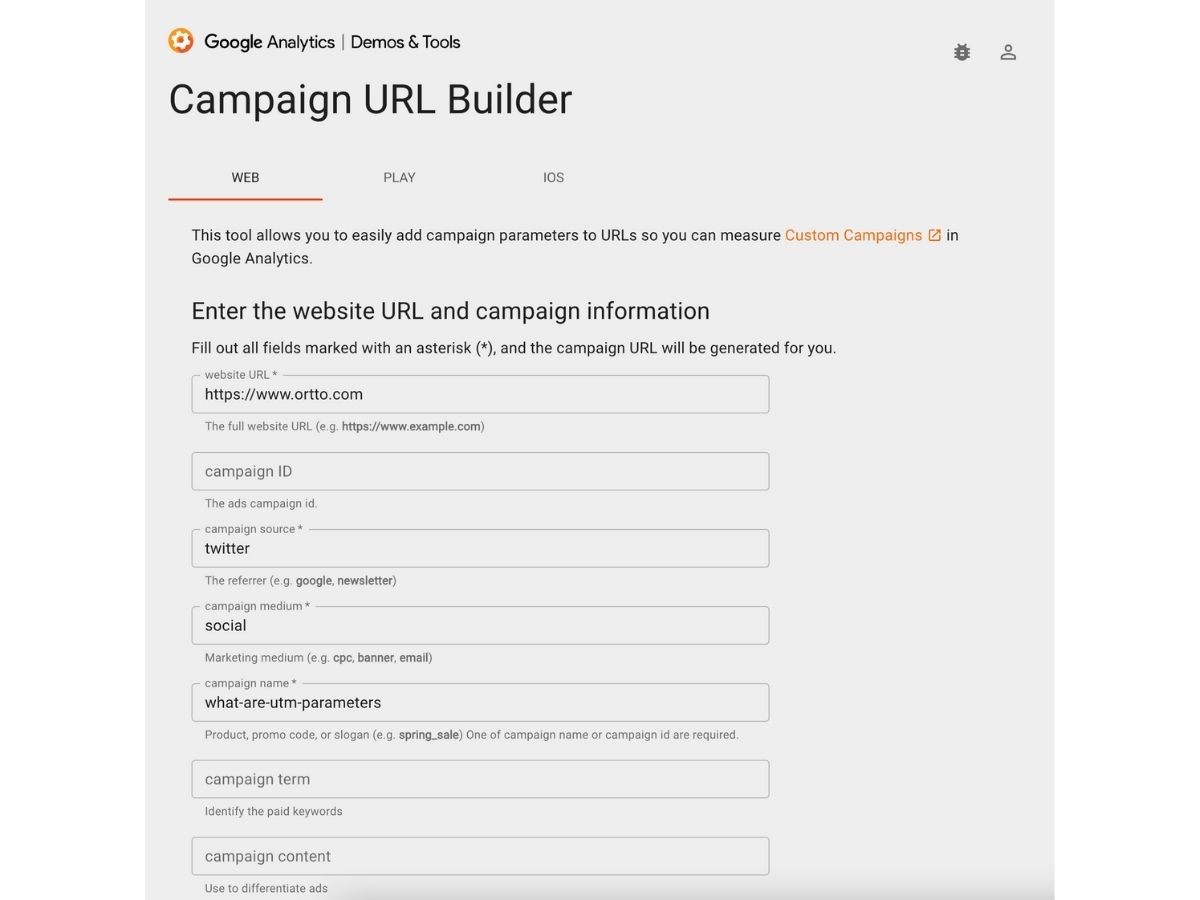
Once you’re through, the builder will spit out your full URL, complete with UTM codes:
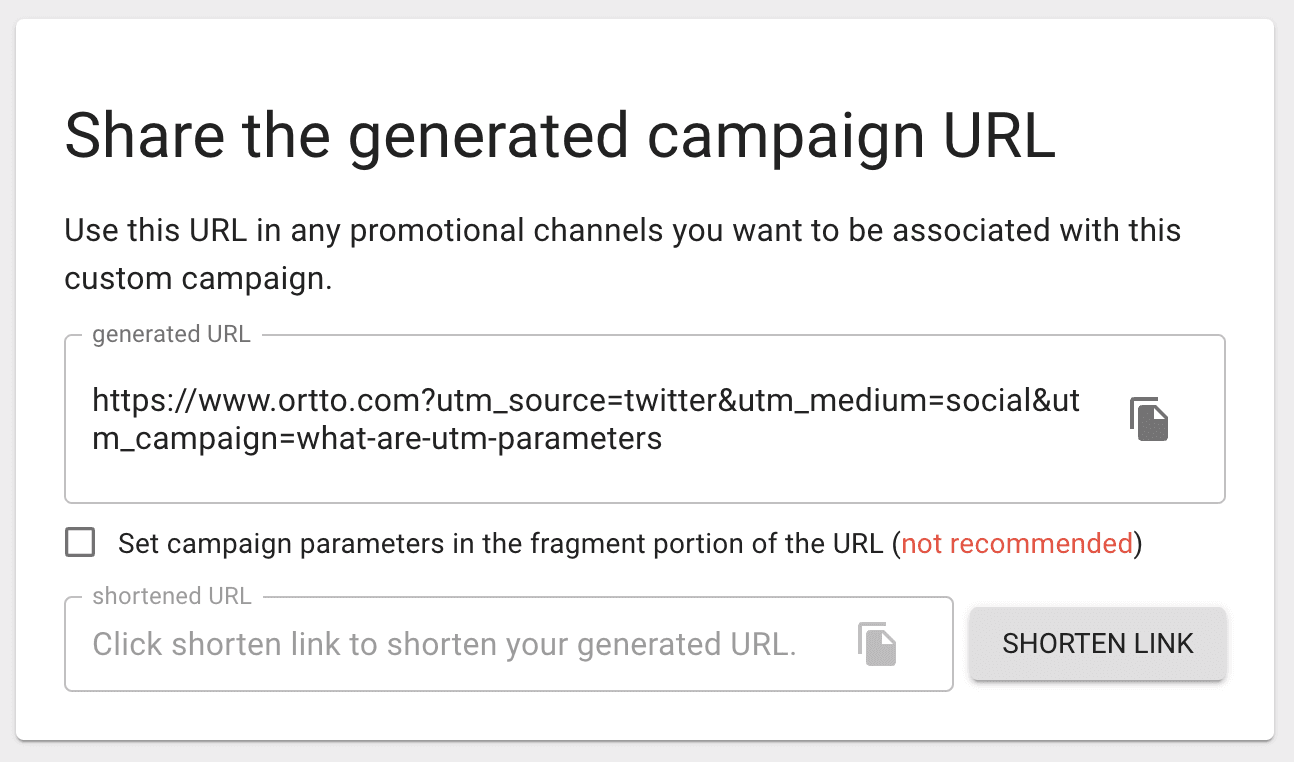
From there you can simply click the “Copy URL” button (and even “Convert URL to Short Link” before that to shorten your long URL), and plug it into whatever tool you’re using to promote your URL.
Final word
UTM parameters are a simple way to generate more data around your marketing campaigns and channels. Establishing naming conventions and putting process around UTM generation takes a little up-front work, but soon enough it will become second nature to add UTMs to all of your marketing.

